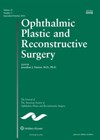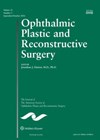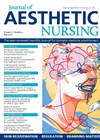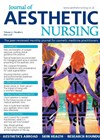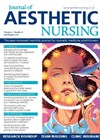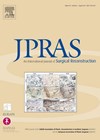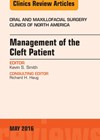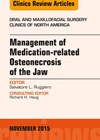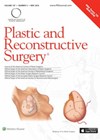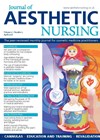
Journal Reviews archive for 2016
Imiquimod for lentigo maligna
This is a retrospective review of 12 patients with periocular lentigo maligna treated with topical 5% imiquimod cream. In six patients it was the only treatment, and in the other six it was used following partial excision, cryotherapy or both....
Serology testing in periocular inflammatory disease
This is a review article of serological tests in thyroid eye disease, IgG4-related disease and myasthenia gravis. The authors provide an overview of the current serology with a brief description of how they relate to the pathogenesis of each condition....
Polydioxanone thread-lifting
A poignant medical liability piece for aesthetic nurses undertaking polydioxanone (PDO) thread lifting. The author provides the clinical background, as well as the anatomical areas which may benefit from rejuvenation with PDO threads. There is some discussion surrounding comparison with...
Non-surgical rhinoplasty: key indications and considerations for nasal augmentation
The author discusses a personal perspective, and preferred treatment techniques of non-surgical rhinoplasty, using dermal fillers and botulinum toxin. Onabotulinum toxin A and incobotulinum A are discussed for off-label use in this advanced indication, and the author suggests using calcium...
Male facial aesthetics
The author shares experience of treating aesthetic male patients, with discussion surrounding components of effective treatment strategies. Discussion is underpinned by current statistics for a global increase in the number of male patients seeking aesthetic treatments, ranging from laser, chemical...
Exploration of more effective neurorrhaphy in facial nerve reconstruction
This study was laboratory based and focused on different types of end-to-side neurorraphy, and their effects on treating partial facial paralysis. The ultimate aim of this study was to determine which end-to-side neurorraphy produced the greatest axonal growth across the...
Rhinoplasty for the cleft lip and palate patient
The cleft nose is one of the most challenging pathologies for rhinologists and facial plastic surgeons to address. The combination of architectural deformity (related to the extent of lip deformity) and scarring from previous surgery combine to cause the surgical...
Otologic concerns for cleft lip and palate
The management of patients with cleft lip and palate includes a focus on effective speech and language function. Poor eustachian tube function and middle ear dysfunction mean over 90% of children suffer from otitis media with effusion. This article provides...
Diagnosis of osteonecrosis of the jaw
Although the management of medical relation osteonecrosis of the jaw is usually provided by colleagues in maxillofacial surgery, it is essential for ENT surgeons to effectively diagnose the various presentations of this condition. Affected bone that is exposed and necrotic...
How to decrease postoperative swelling in rhinoplasty
Postoperative bruising and facial swelling is one of the main concerns of rhinoplasty patients. There is sustained controversy on the surgical manoeuvres, medication and postoperative measures to reduce it, and many published papers address this topic. The authors of this...
Age-related changes in the menopausal woman
The author explores the aesthetic impact of hormonal ageing during the perimenopausal, menopausal and postmenopausal periods. The author explains that oestrogen levels can impact upon several skin functions, including: excessive hair growth, pigmentation, vascularity, elasticity and water-holding capacity. A detailed...
Hot or cold?
The authors present a retrospective literature review of non-surgical body contouring technologies, including radiofrequency, low-level laser therapy, cryolipolysis, as well as thermal and non-thermal ultrasound. A useful, referenced statistical table is provided for comparison of abdominal circumference reduction among different...

